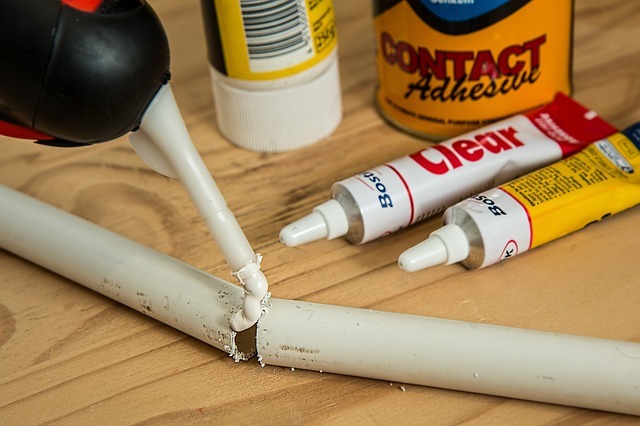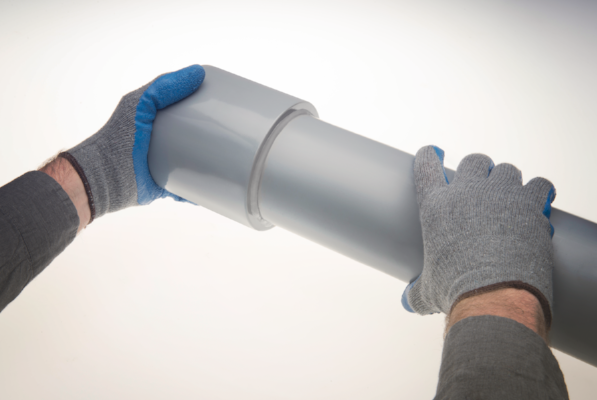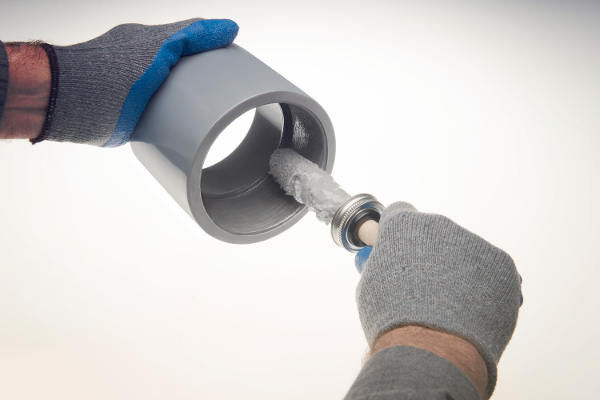Why Solvent Cement Is Not Glue
“Glue” and “solvent cement” are two words often used interchangeably in reference to plastic piping installation. However, solvent cement is not ordinary pipe glue. Both accomplish the immediate goal of joining, but glue is an adhesive. Solvent cement chemically fuses the two pieces together at the molecular level. Solvent cement creates a permanent joint, where glue is temporary.
This fundamental distinction is just the beginning of the differences between the two joining materials.
What Is Glue?
Glue, by definition, is an adhesive that holds something in place. The emphasis of this description is that the connection is temporary and some amount of force can cause the bond to break, separating what has been joined.

How Glue Works
The two forces at work in glues are adhesion and cohesion. Using two pieces of pipe glued together as an example—adhesive forces are those that connect the glue to each piece of pipe. A cohesive force is what holds the glue to itself.
There are various types of glues that work in different ways. Overall, glue can be classified as either reactive or nonreactive, depending on how it hardens.
Reactive adhesives, which harden through chemical reactions, do so in two primary ways:
- Two-part adhesives, such as epoxy, require two materials to create a chemical reaction.
- Single-part adhesives may use an energy source—such as heat, moisture or radiation—to cause the reaction and hardening.
Nonreactive adhesives require no chemical reaction to harden:
- A solution that contains solvents will harden as it evaporates.
- Some adhesives “stick” when pressure is applied (think Post-It® notes).
- Adhesives applied in a molten form harden as they cool (picture a hot-glue gun).
Performance of Adhesive Connections
Regardless of the two materials being connected or the type of adhesive used, glue bonds only “stick” two materials together. Once a strong enough force acts on the connection, the bond can break and the two joined materials detach.
In the world of industrial processing applications, glue is unreliable. It would significantly diminish pressure ratings, and be potentially incompatible with processing materials and high temperatures. In addition, the chemicals within certain glues may actually degrade or weaken the piping material.
For industrial applications involving plastics, installers turn to solvent cement.
What Is Solvent Cement?
Solvent cement chemically fuses the two pieces together at the molecular level.
.png?width=600&name=Apply-Solvent-Cement-Outside-Pip%20(1).png)
How Solvent Cement Works
Different classes of solvent cement can be used with a number of thermoplastic materials. No - do not use PVC glue in place of CPVC solvent cement. CPVC and PVC each have their own joining materials that have been specially formulated to work with their chemical composition. Using the wrong material can result in weak joints.
CPVC solvent cement is made up of CPVC resin, stabilizers and fillers dissolved in a cocktail of solvents. Once applied to the CPVC material surface, the solvents soften and dissolve the top layer of CPVC material, essentially untangling the polymer chain.
Then, as two pieces of CPVC are pressed together and the solvent evaporates, the freed molecules of one piece bond with the free molecules of the second piece. A tapered fitting ensures good contact between the outer wall of the pipe and the inner wall of the fitting. Then, the CPVC resin in the solvent cement fills in any gaps that exist between the two pieces, creating one continuous piece of CPVC.

Solvent Cement Performance
Solvent cement is the preferred joining mechanism for CPVC piping. It is superior to threading, flanging and welding methods because it is fast and easy to install, and incredibly reliable. When properly assembled, fused solvent cement joints extend the life expectancy of an industrial system by maintaining the thermoplastic’s pressure rating, chemical resistance and safety qualities.
How Is Solvent Cement Installed?
Solvent cement is a simpler and less costly way to join industrial piping systems. Learn more about this superior installation method by checking out the Complete Guide to Solvent Cement.
If you have any questions about solvent cement or the appropriate solution for your application, our team of product and engineering specialists is ready to talk.


